Tag Archive for: MRD
Self-Advocacy in Myeloma Care | Advice From an Expert
Self-Advocacy in Myeloma Care | Advice From an Expert from Patient Empowerment Network on Vimeo.
What questions should myeloma patients ask their doctor about a treatment plan? Myeloma expert Dr. Omar Nadeem shares key advice and emphasizes the importance of patients engaging with their healthcare team in treatment decisions.
Dr. Omar Nadeem is the Clinical Director of the Myeloma Immune Effector Cell Therapy Program and Associate Director of the Multiple Myeloma Clinical Research Program at the Dana-Farber Cancer Institute. Learn more about Dr. Nadeem.
Related Resources:

Clinical Trials for Myeloma Treatment | Essential Information for Patients |
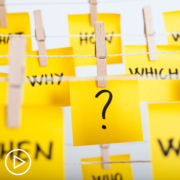
|

Personalized Medicine for Myeloma Treatment | What Patients Should Know |
Transcript:
Katherine:
What questions should patients be asking their provider about a proposed treatment plan?
Dr. Nadeem:
Yeah. I think because myeloma therapy’s so nuanced and much of this is still in clinical trials or under investigation about what to do with some of these results, I would say, as a whole, it’s important to know which tests the physician looks at to determine how you’re doing, and kind of what their assessment of that result is. So, for example, if somebody’s had a 50 percent reduction in the amount of abnormal protein in the blood, is that sufficient, or should we be aiming for a number that’s much higher than that?
Some of that depends on kind of where they are in their treatment course, but that’s a very sort of reasonable question to ask your physician is that where do you see my response now, let’s say six months into therapy, and is this adequate, and what is now, after we have all this information, what is my roadmap going forward to try to keep this disease in check?
Katherine:
Yeah. Well, that’s great advice, Dr. Nadeem. Thank you. I’d like to turn to self-advocacy, Dr. Nadeem. Why is it so important that patients engage in their care treatment decisions?
Dr. Nadeem:
Yeah. As I mentioned, myeloma therapy is so individualized now and we can sit here, look at the trial data, get very into the weeds and technical about this therapy with this approach as X or Y higher response rate.
Or MRD-negative rate, but in reality, we’re dealing with people and we’re dealing with people that have lives.
They have all their priorities, and until you share that with us, it’s very difficult for us to know exactly what’s important to you. So, what I may consider to be kind of the “best therapy” for you may not make sense for you because of all the priorities that you may have, and I think it’s so important to advocate for yourself and not be afraid to bring that up to your physician because I think many patients kind of hold that stuff in for a long time because they don’t want it to impact their care. But I would argue the other way around.
Tell us. Tell us exactly what you prioritize. Tell us if you can’t be out of commission for work for X amount of time because of a stem cell transplant. We now have options. We now have options for patients because of all these amazing new therapies for myeloma and we can come up with a very individualized treatment plan for you based on your priorities.
Katherine:
If a patient is feeling like they’re not getting the best care or they’re uncomfortable with the care they’re receiving, what steps should they take to change that?
Dr. Nadeem:
Yeah, I think that’s very difficult because this is a complex system. Medical systems are getting even more and more complex. They’re busy. Everybody’s busy: busy offices, labs, radiology. We’re all feeling that. It doesn’t matter where you are. So, I think it’s important to raise those concerns, number one, to your practice that you’re being seen at because they would like to see that feedback, right? So, kind of see what is something that they can perhaps improve upon. I think it’s always important, like we just said, to advocate for yourself and raise some of these issues and not be afraid of that.
We’re all in this together, right, so I think ultimately, we’re all trying to take the best care of you and we would need to know which part of that may or may not be working so well.
Personalized Medicine for Myeloma Treatment | What Patients Should Know
Personalized Medicine for Myeloma Treatment | What Patients Should Know from Patient Empowerment Network on Vimeo.
What is personalized medicine, and how can myeloma patients access this type of care? Myeloma expert Dr. Omar Nadeem defines personalized medicine and shares how test results can impact myeloma care and treatment options.
Dr. Omar Nadeem is the Clinical Director of the Myeloma Immune Effector Cell Therapy Program and Associate Director of the Multiple Myeloma Clinical Research Program at the Dana-Farber Cancer Institute. Learn more about Dr. Nadeem.
Related Resources:

|

|

|
Transcript:
Katherine:
Well, Dr. Nadeem, we’ve been hearing the term personalized medicine more frequently in recent years. How would you define personalized medicine for myeloma, and how can patients access this type of care?
Dr. Nadeem:
Yeah, personalized medicine or precision medicine is a term that we’ve really sort of used for many oncologic conditions over the last decade or so. I would say, for multiple myeloma, in terms of identifying a target within the myeloma cell that’s unique to the patient.
And then deploying a certain therapy to that patient because of that target is still lacking. We do have one example where patients have, for example, an 11;14 translocation, which we see in about 15 percent of myeloma patients.
There’s an agent called venetoclax (Venclexta) that is very active against that particular cohort of patients, although that is still not approved to be used, but that’s one example where that agent specifically benefits that type of myeloma. Other than that, most of the therapies that we have benefit essentially everybody with myeloma, which is great, but it’s not so personalized.
Where I would say there’s the most personalization happening now, at least in my practice, is looking at which types of therapies an individual patient may receive. What I mean by that is if somebody’s in an excellent response, with quadruplet-based induction therapy, I have a very real discussion with them about the pros and cons of stem cell transplant.
We make those decisions in real time depending on how the patient doing, depending on how their response is.
And then kind of deciding a whole kind of what are the kind of risks and benefits and what makes sense for that individual patient. Similarly, when you go on to maintenance therapy, maintenance therapy means that after you’ve gone through the initial phase of your myeloma therapy and the disease is under control, what type of therapy can we keep you on to keep it under control for as long as possible? Historically, that has been lenalidomide or Revlimid. Now we’re adding drugs such as daratumamab (Darzalex) and other agents to Revlimid to see if that can further prolong the response to that initial therapy.
So, all those decisions are so individualized that you have to discuss with your provider what makes sense for you and what are the pros and cons of doing one approach versus the other.
Katherine:
Well, if we’re talking about in-depth testing, how do the results of that testing affect treatment options?
Dr. Nadeem:
So, right now we use conventional blood tests to get a sense of response in the vast majority of patients. That includes the serum protein electrophoresis and the serum free light chain assay.
Most patients have detectable levels of these proteins, abnormal proteins in the blood at diagnosis and then you can follow them using a blood test. There’s a subset of patients that have disease only that shows up on scans. So, we then kind of incorporate some of those scans and then, also, utilize the bone marrow results both in the beginning and in subsequent analyses to kind of give a big-picture composite response assessment for that particular patient. Nowadays, there are also other tools that we’re using, such as MRD, or minimal residual disease.
That is a test that is done on a bone marrow biopsy to determine, if you don’t have detectable protein in the blood, do you have myeloma cells present at the deepest level possible? And if you do versus if you don’t, trials have shown that there is a difference in terms of prognosis. Now, while that hasn’t fully been utilized yet to make treatment decisions in patients that are not on clinical trials, we do get prognostic information out of it, and nowadays, more and more of those trials are using these MRD tests to determine what to do with treatment.
And I think that’s how it’s going to be in the future. So, having those extra tests available but, again, important to discuss with your provider what is the utility of this test. How are we going to use this information for your individual case to make some decisions?
The Importance of Molecular Testing Following an AML Relapse
The Importance of Molecular Testing Following an AML Relapse from Patient Empowerment Network on Vimeo.
Why do you need molecular testing following an AML relapse? Dr. Sanam Loghavi emphasizes the importance of this essential testing and why it’s necessary following relapse.
Dr. Sanam Loghavi is a hematopathologist and molecular pathologist at The University of Texas MD Anderson Cancer Center. Learn more about Dr. Loghavi.
Related Resources:

|

|
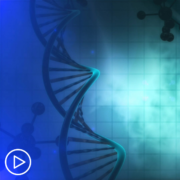
|
Transcript:
Katherine Banwell:
Unfortunately, relapse can happen following a course of treatment for AML. Should patients undergo molecular testing again before choosing another round of therapy?
Dr. Sanam Loghavi:
100 percent yes, that is always a yes. So, like I said, at baseline there are certain recommendations and the standard of care is to perform genetic testing.
But I cannot emphasize this enough, that AML or any cancer, for that matter, cancers tend to be smart, so they bypass the mechanisms that we try to eliminate by our targeted therapies.
So, oftentimes the genetic landscape of disease will actually change upon relapse or what we refer to as clonal evolution, and you may hear this terminology in the literature. So, it’s very important to molecularly or genetically characterize the disease at relapse before you decide how you are going to alter the course of treatment at that point.
Katherine Banwell:
Dr. Loghavi, what are you excited about in your research right now?
Dr. Sanam Loghavi:
Sure. So, I’m a pathologist, so I do a lot of molecular testing, and I also do a lot of measurable residual disease testing, and measurable residual disease tends to be one of the most informative factors in the care of patients with acute myeloid leukemia. So, these are the things that we’re very excited about, again, identifying better molecular targets of therapy, being able to measure residual disease at a more sensitive level that allows us to make better informed decisions for the care of our patients. And also, again, identifying the mechanisms of how AML develops in order to be able to eliminate the disease.
Advances in Non-Small Cell Lung Cancer Testing
Advances in Non-Small Cell Lung Cancer Testing from Patient Empowerment Network on Vimeo.
Lung cancer expert Dr. Grace Dy discusses the latest research in lung cancer testing, including liquid biopsies and minimal residual disease (MRD).
Dr. Grace Dy is Chief of Thoracic Oncology and Professor of Oncology in the Department of Medicine at Roswell Park Comprehensive Cancer Center in Buffalo, New York. Learn more about Dr. Grace Dy.
See More From INSIST! Lung Cancer
Related Resources:
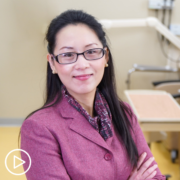
An Expert Explains Predictive Biomarker Testing for Lung Cancer |

|

|
Transcript:
Katherine Banwell:
As we know, researchers are still discovering new markers. Could you tell us about the latest news and research in biomarker testing for non-small cell lung cancer?
Dr. Grace Dy:
Oh, there is a lot going on. You know, sky’s the limit. But just an example: we have liquid biopsies that are in clinical use right now, typically in the stage IV setting.
But beyond that, we’re also having what we call minimal residual disease testing in what we call adjuvant situations. For example, patients who had surgery, there’s a big proportion of patients who still relapse.
So, finding out – and our scans are imperfect. They will not be able to detect micro metastatic clones or even a small cluster.
If you have a million cancer cells clustered somewhere, it will not show on the scan.
Katherine Banwell:
Each and every one of them.
Dr. Grace Dy:
Right. So, is there a better way? And so, that’s the question: can we detect it in the blood? So, these are assays that are being developed. Looking at different angles, not necessarily mutations, but maybe what we call epigenetic, meaning changes on top of the DNA that makes the DNA molecule be different in terms of whether some areas of the gene will be expressed or not.
And so, looking at these patterns because they’re different in cancers versus non-cancers. So, whether you can see it in the blood. So, it’s a ripe area.
There’s a lot of – so, there’s some overlap with early cancer detection and MRD, or minimal residual disease testing.
So, I think there’s an intense interest in developing these. But none are fully validated yet. There are trials that are going on, the studies that are ongoing to prove the utility and validity of these tests. So, we’re very excited. And obviously, AI everywhere. You have ChatGPT, right? So, you have AI being incorporated in diagnostics as well, in radiology, in pathology, to see: hey, maybe can we use AI technology to even maybe one day give us a mutation profile, right?
Katherine Banwell:
Yeah.
Dr. Grace Dy:
And that would be huge, right? But we’re not there yet.
What Should You Know About Emerging Myeloma Treatment Options?
What Should You Know About Emerging Myeloma Treatment Options? from Patient Empowerment Network on Vimeo.
With myeloma treatment and research advancing quickly, it’s important to stay up-to-date on the latest therapies. Myeloma expert Dr. Jeffrey Matous reviews new and emerging myeloma treatment approaches, how these therapies work, as well as the potential risks and benefits of each option. Dr. Matous also shares resources for learning about myeloma and how to access better care.
Dr. Jeffrey Matous is a myeloma specialist at the Colorado Blood Cancer Institute and the assistant chair in myeloma research for Sarah Cannon Research Institute. Learn more about Dr. Matous.
Related Resources:

|

|

|
Transcript:
Katherine:
Hello, and welcome. I’m Katherine Banwell, your host for today’s program. Today’s webinar is about advances in myeloma treatment and how emerging therapies may affect your care decisions.
Before we get into discussion, please remember that this program is not a substitute for seeking medical advice. Please refer to your healthcare team about what might be best for you. Well, let’s meet our guest today. Joining me is Dr. Jeffrey Matous. Dr. Matous, welcome. Would you please introduce yourself?
Dr. Matous:
Thank you very much, Katherine. I’m Dr. Jeff Matous, and I am physician at the Colorado Blood Cancer Institute, and also, the Assistant Chair in Myeloma Research for Sarah Cannon Research Institute here in Colorado.
Katherine:
Thank you so much for taking the time to join us today.
Dr. Matous:
It’s a pleasure.
Katherine:
Before we get into our discussion, would you share with the audience how the field of myeloma has changed over the course of your career?
Dr. Matous:
It’s unbelievable. I mean, I started treating myeloma back in the days of VAD, vincristine (Oncovin), doxorubicin (Adriamycin), dexamethasone (Decadron) 96-hour pumps with 40 pounds of dexamethasone that we put into patients, and wow. We didn’t have much else. We didn’t know how long to treat people, and then, in the 2000s, we have the revolution of all the new therapies, and it just keeps going and going and going. It really is an exciting to be in this field.
Katherine:
Yeah. Let’s begin by sharing some advice for navigating myeloma care on a basic level. First, what testing should take place following a myeloma diagnosis?
Dr. Matous:
Well, I think even before that, Katherine, I always tell my patients that an educated patient, like the people that are on this webinar, are the best patients, and so, when I meet a patient for the first time, we spend a lot of time educating patients even before we delve into a lot of the testing.
And I refer them to excellent resources out there. Examples of these are the International Myeloma Foundation, or the Multiple Myeloma Research Foundation.
There are others, of course, and so I really encourage my patients. In fact, I usually show them how to navigate these sites. And then, we get into testing, and testing in myeloma is multifaceted, because myeloma can affect patients in so many different ways. For example, it involves radiology studies to look for bone disease, urine work to see if the kidneys are affected by myeloma, a lot of blood work, and then, we also do a lot of testing to make sure that we understand the whole health of the patient, because that comes into play so much when we’re making treatment decisions in myeloma.
Katherine:
Yeah. What factors impact treatment decisions?
Dr. Matous:
Well, there are so many. One of the key ones is fitness, and fitness is a term that myeloma doctors use and rely on tremendously.
And fitness, more or less, falls into a couple different categories. It’s more complex than that, obviously, but generally speaking, it’s too old or too frail, or young and vigorous and I stress to my patients that vigorous or frail is not determined by chronological age. It’s determined by your physiologic age. That’s really critical, so determining what your patient’s overall fitness is, is really important in myeloma. And then, we have to assess the risk of myeloma. I think we’ll talk about this a little bit later, because not all myeloma is the same and we treat myelomas differently depending on risk, certainly. And then, patient preference is a huge part, because there are so many ways to treat myeloma these days that we explore options with the patients and sometimes patients have pretty strong opinions about, you know, one type of treatment or the other, for example.
Katherine:
What advice do you have for patients and caregivers related to working with their healthcare team in choosing a therapy?
Dr. Matous:
Yeah. I think the big thing is to do some research on your own, but really, ask questions when you see your physician. I mean, ask questions about, for example, what are my treatment options? Are there clinical trials that might be available to me? What’s on the cutting edge in myeloma? What are the standard therapies? What are the pros and cons? And a question I often counsel patients to ask when they’re seeking other opinions is if you had 100 people like me and you treated them this way, how many would do well and how many would not do so well, and prognosis, and so forth. And then, the other thing I think is really important sometimes is gauging how experienced your physician is in treating myeloma, because we actually have data that shows that patients who are treated in myeloma centers actually fair a little better than those who are not.
Involving a myeloma expert in your care doesn’t necessarily mean you have to get your care at that center. It just means you may want a myeloma expert on your team. Pretty much every doctor I know welcomes a myeloma person on their team, because the field is so rapidly evolving. It’s really hard to keep up with for a lot of people.
Katherine:
Yeah. That’s great advice, Dr. Matous. Thank you. Stem cell transplant is often considered for myeloma patients. Can you talk about who this treatment option might be appropriate for?
Dr. Matous:
Absolutely, so we’ve known for decades that, what I call high-dose chemotherapy, also called stem cell transplant, is a very effective and very potent treatment of myeloma and we’ve shown that time and time again in clinical trials, including some recent ones that are published just in 2022.
And so, high-dose chemotherapy and stem cell transplant is not for everyone. You have to be fit enough to undergo it, and this is not age determined. It’s fitness determined. And then, a lot of people live a long way from centers that perform high-dose chemotherapy and stem cell transplants.
If patients have to travel hundreds of miles, then sometimes that comes into play. Hey, I just can’t do this. I can’t get the time off, and uproot, and bring a caregiver, and travel 300 miles to get this care, so sometimes that comes into play. Physician bias definitely comes into play. We know that some physicians are stronger proponents of high-dose chemotherapy and stem cell transplant, and I fall into that category, but we have other physicians that may not even bring it up as an option to their patients. We know, for example, that African Americans and other minorities are notoriously under-referred for high-dose chemotherapy and stem cell transplant. A lot of decisions go into that, and again, this is one of those situations where if you’re transplant-eligible, that means you’re young and vigorous, and on paper, a candidate. You want to go, at the very minimum, consult with physicians that do high-dose chemotherapy and stem cell transplant and hear about that option.
Katherine:
Yeah. You mentioned high-risk myeloma earlier. How do you determine if a patient is high risk or low risk?
Dr. Matous:
Absolutely, so this is not uniformly agreed upon among myeloma doctors, but in general, we assess risk based on a few different things. One is called staging, and we stage myeloma unlike any other cancer, so it’s not staged like breast cancer, or lung cancer, or prostate cancer. It’s staged according to something called R-ISS, RISS, and you get, basically, a one, two, or a three.
Those are your stages, and in general, if your stage three, you have higher risk disease, but even more than that, we’re beginning to understand how myeloma cells misbehave at the genetic level, and we know that there are certain genetic findings inside the myeloma cell that can convey higher risk features. It’s important to stress to patients that these are not genetic findings that they were born with or can pass on through hereditary.
These are findings that occurred during the life of the patient that occurred by chance and developed inside that cell that turned into myeloma, and those are the genetic changes that we’re talking about. And we know that certain of these genetic changes confer higher risk disease. And in general, Katherine, if I see 100 people with myeloma, about 85 of the 100 will fall into what I call a standard risk category and about 15 percent will fall into what we call the high-risk category.
Katherine:
Okay. That’s really good to know. Thank you. There are several treatment classes for myeloma, such as immunomodulatory therapy and proteasome inhibitors, for example. And they’re often used together.
So, what is a combination therapy and why is it used so frequently for myeloma?
Dr. Matous:
Absolutely, so with learned over the years in myeloma that combining different types of drugs that work in different ways, we call those classes, so different classes of drugs, combining them together is the optimal treatment for myeloma.
And back in the day, we used to use two drugs. Then, we learned that three drugs are better than two drugs, and now, we have data that four drugs are better than three drugs. And so, we bring in drugs from all kinds of different categories for our patients. And we even know that for the non-transplant-eligible patients, for the older patients, for example, that combining drugs from different classes is really, really important to get the best outcomes. And in general, the three classes that we use – the four classes that we use when we’re treating myeloma patients initially include the immunomodulatory drugs, and examples of those are lenalidomide, also called Revlimid. pomalidomide, also called Pomalyst.
Thalidomide’s (Thalomid) an older drug, but we still occasionally use it.
And then, we have the proteasome inhibitors. Examples of those are bortezomib (Velcade), carfilzomib (Kyprolis), and to a much lesser extent, there’s one called ixazomib (Ninlaro). And these days, we know that CD38 antibodies are really important and really getting their foothold into the initial treatment of myeloma.
Examples of CD38 antibodies are daratumumab (Darzalex) or isatuximab. And then, usually, we combine these treatments with steroid medicines to sort of increase the effectiveness of the regiments. That’s how – those are the classes that we use when we’re treating myeloma.
Katherine:
Okay and have you learned about adding one treatment to another to another through clinical trials or is trial and error?
Dr. Matous:
Absolutely. We would not be where we are right now without the conduct of clinical trials. I always tell my patients by the time something’s approved in myeloma, and we had things approved in 2022, the field is already moving past that in clinical trials. It’s unbelievable. So, I’ll give you an example. When daratumumab, one of these antibodies, got approved by the FDA, already when it got approved by the FDA, we knew through clinical trials that were being conducted that combining it with other types of medicines was far more potent.
And we have countless examples of this, so yeah. Absolutely, so every treatment that we use in myeloma, we discovered and developed through a clinical trial. And I always encourage my patients strongly to consider clinical trials, and then, we have to explain, because when patients hear clinical trials, and I could be deviating a little bit here, Katherine.
They often think about experimentation and testing things that are unproven. In myeloma, we occasionally do that, but far and away, the overwhelming majority of our clinical trials are testing agents that we know are effective. We’re just trying to figure out what the best combination is and make sure that it’s safe for patients.
Katherine:
Yeah. Dr. Matous, some of our viewers may have already been through some therapy at some level. Let’s dive into new and emerging treatment. CAR T-cell therapy has been approved for myeloma patients and it’s certainly a hot topic right now. Can you tell us about this treatment and who it might be right for?
Dr. Matous:
Absolutely, so these T-cell therapies in myeloma are really exciting, and basically, how they work is T cells are cells that normally, in our body, they’re part of our immune system. When they see something foreign, usually, it’s a foreign infection or some kind. T cells go into kill mode and take out the foreign invader, and they’re supposed to do this with cells that are thinking about turning into cancer, but for various reasons, cancer cells can escape the T cells, and then, kind of brainwash the new system to say, hey. It’s okay if we coexist with you. No big deal. We’ll just hang out together. Okay? And that’s not okay. And so, in CAR T-cell therapy, what we do is we take the patient’s T cells.
We remove them from the blood with a procedure called apheresis, which is a machine that many patients might be familiar with through their stem cell collections.
It’s the same machine. And we collect these T cells. Then, they go to a laboratory where they are genetically modified in the laboratory using very sophisticated techniques to become myeloma killers. And we tell – we educate the T cells to become myeloma killers. We grow them up in sufficient numbers, and then, we return them to the patient. We just, basically, put them back in the patient’s bloodstream in the vein and they go and they are really effective at killing myeloma cells. And that’s CAR T-cell therapy, so it’s an amazing immune therapy. It’s way more complicated than I laid out, of course, but that’s the general thought behind it.
Katherine:
What are the risks of this therapy?
Dr. Matous:
Absolutely, so we have a lot of patients who come and ask about CAR T-cell therapy and think that it’s the same thing as getting daratumumab in the clinic or carfilzomib in the clinic.
Get it and you’re on your way. Far from that, and so, CAR T-cell therapy has a lot of risks. The risks fall into a few different categories. The first risk is called CRS, which doesn’t stand for what you think it stands for. It stands for Cytokine Release Syndrome. This occurs when the T cells recognize the myeloma cell and kill it, and when they do this, a lot of substances get released in the body that can cause a lot of symptoms, like fever, or low blood pressure, or low oxygen, and this requires specialized management to shepherd people through this.
This almost always occurs in about the first week of the treatment after the patients receive the CAR-T cells. In addition, patients who receive CAR-T cells can have what’s called neurologic toxicity that falls into many different categories. It can be something as simple as a headache, or a transient or temporary difficulty, you know, saying words or being confused, or in the most severe situation, even a seizure.
This requires a lot of close monitoring for neuro toxicity. In addition, we know that patients that get CAR T-cell therapy are, for quite a while after they receive the CAR-T cells, an increased risk for infection. It’s very suppressing of the immune system, immunosuppressive. And lastly, a lot of our patients who go through CAR T-cell therapy have low blood counts for a long time and they have to be monitored for this, might need transfusions, or some different therapies. It’s a complicated therapy for sure.
Katherine:
Yeah, so what questions should patients be asking their doctor when considering CAR T-cell therapy?
Dr. Matous:
I think the first thing, of course, is am I a candidate, because the commercially approved CAR-T cells, there are very specific criteria for who’s a candidate, who could receive it. Okay, and then, you want to know, one, if you’re a candidate. Two, what the risks and benefits are.
Three, are there alternatives besides CAR T-cell therapy. Is it too early or too late to do this? Should we think about maybe another clinical trial or one of the T-cell redirecting antibodies, for example? You want to ask those questions for sure. These treatments are tremendously expensive, of course, and so that may come into play, as well. You want to know what the experience of the center is with CAR T-cell therapy, I think, and then, you also want to know are there clinical research studies for which you might be eligible to have CAR-T cells, not just commercially available ones, because we have two that are commercially available right now, and we have scores of CAR T-cell treatments that are still in clinical trial. [22:32]
Katherine:
Yeah. Well, thank you for that, Dr. Matous.
I know many viewers will appreciate all of this information. Let’s switch gears now to another therapy we’ve been hearing about; bispecific antibodies. One has been recently approved for myeloma, teclistamab, so let’s start with what are bispecific antibodies and who might they be right for?
Dr. Matous:
And strap on your seatbelt, because there’s a whole bunch of them coming, I think, for approval. So, the T-cell redirecting antibodies, it’s a different strategy for trying to get your T cells, the patient’s T cells, to attack the myeloma cells. And in CAR T-cell therapy, it’s a single infusion. That’s the treatment. And the bispecific antibodies that I often call T-cell redirecting antibodies, because they redirect the T cells to the myeloma cell, these are given over a continuous period and it might as long as you tolerate it, as long as it’s working. It might be for a year. And they are given either under the skin as a subcutaneous injection, or in the vein.
And there are many, many different of these T-cell redirecting antibodies, the bispecific antibodies. How they work, I just do this with my patients. I hold up my hand and I say the bispecific antibodies have two hooks on them, and one hook recognizes the T cell and latches onto the T cell, and the other hook latches onto the myeloma cell. And then, what it does, it brings the T cell in proximity to the myeloma cell. Then, the T cell says “Oh, aha. I’m supposed to kill this myeloma cell,” and usually does it. Now, the part that connects the T cell and these bispecific antibodies is always the same. It’s CD3. However, the part that sticks on the myeloma cell, there are different targets, and you referred to teclistamab (Tecvayli), which was approved by the FDA, and that attaches to something on the outside of a myeloma cell called BCMA, BCMA.
But we know that other bispecific antibodies that can attach to different markers or antigens on the outside of the myeloma cell and affect the same change, and so, I think these are going to be coming fast and furious.
Katherine:
Who’s this class of treatment right for?
Dr. Matous:
I think – well, again, the FDA approval right now is for people who have seen pretty much everything. You know, you’ve had a lot of treatments. You’ve seen all the different classes of the myeloma drugs, but in our clinical research trials right now, we’re testing these as an initial therapy, in second-line therapy, after stem cell transplants. They’re being tested pretty much in every scenario right now in clinical trials, so right now, it’s when you’ve exhausted the normal treatments and you’re considering CAR T-cell therapy, or you’re considering getting treated with a drug called selinexor (Xpovio), or looking at another clinical trial. That’s when it’s the time to ask about the bispecific antibodies.
Katherine:
What are the risks and benefits of this therapy?
Dr. Matous:
The risks are pretty similar to the risks from CAR T-cell therapy, so Cytokine Release Syndrome. That usually occurs during the first week. Neurologic toxicity is, I think, less frequent with the bispecific antibodies, but infections and low blood counts definitely a concern with these bispecific antibodies, requires a lot of monitoring without any doubt.
Now, the other thing about the bispecific antibodies, there’s, right now, they’ve been in the realm of the larger centers, so myeloma centers is where people have been getting these bispecific antibodies, but there’s absolutely no question in my mind that these bispecific antibodies are going to be available through almost every general hematology, oncology practitioner’s office, but not for a while. The docs that aren’t used to giving these medicines are a little – they’re being quite cautious rolling them out in their practices right now. There are still a lot of questions as these roll out, and so, right now, I think teclistamab is still largely unavailable outside myeloma centers, but that’s going to change, I think, even over 2023 and definitely into 2024.
Katherine:
Okay. That’s really good news. For patients who want to know more about bispecifics, what questions should they be asking their healthcare team?
Dr. Matous:
Again, the same thing is – the same questions. Well, teclistamab is approved by the FDA. What other bispecifics are there? What about combinations? What about clinical trials? And then, that’s what you want to ask for sure. Then, how often do I need to come in the office? With teclistamab, the answer is weekly.
If they say for how long, it’s until it quits working or you have side effects, and then you can’t take it anymore. That’s the way the FDA label is. And so, it’s a big commitment to go on these treatments, but they’re effective. You ask me about the effectiveness of these drugs and, essentially, all the studies with these different bispecifics, including teclistamab, have been studied initially in people who have seen every myeloma treatment. They’ve had an average of about six different myeloma treatments.
They’ve seen all the drugs. They’re not working anymore. They’re in trouble. They’re in a pinch, and roughly, seven out of ten people have dramatic responses to these bispecifics when they’re treated, which we’ve never had anything like this at all in the myeloma world.
Katherine:
Wow. Do the side effects go away at some point?
Dr. Matous:
The side effects are completely manageable. Yeah and you can – by and large, you can adjust the bispecific, either the schedule or different things, to make these completely tolerable for patients.
Katherine:
Okay.
Dr. Matous:
Very few patients on our trials, with these bispecifics, who we have not been able to manage and, pretty much, handle all the – any side effect that occurs.
Katherine:
Okay. That’s good. Are there other emerging myeloma therapies that patients should know about?
Dr. Matous:
There are a bunch of other therapies. Looking at in myeloma, for sure, and a lot of these other therapies are – they’re exploring the same pathway where the proteasome inhibitors work, but in a little different way.
And proteasome inhibitors, again, just to refresh your memory, are Velcade or bortezomib, Kyprolis or carfilzomib, and there are different drugs that work in this area that are being explored. And also, for the immunomodulatory drugs, there are different what are called cell mod or cell-modifying drugs that are being developed. Also, at our recent hematology meeting last December where all the blood doctors get together, there was a lot of research presented looking at using different cells for attacking the myeloma, for bringing back an old friend, interferon, to fight the myeloma through a new sophisticated way. The field is just really going at breakneck speed right now.
Katherine:
Where do clinical trials fit into myeloma care?
Dr. Matous:
I’m biased, Katherine. I think in every step of your myeloma journey you should ask about a clinical trial, because clinical trials might be appropriate as initial therapy, second-line therapy, third-line therapy, post-transplant maintenance therapy. There are clinical trials available, pretty much, at every phase of myeloma care, and so, I think it’s important that you here about your clinical trial options when you’re talking with your physician. Now, for some folks, it’s going to be hard to get on a clinical trial. You might be a long way from a center that does very many clinical trials, but you should always, always ask about it and there are many resources for researching clinical trials that are out there, right? One example is you can call The Leukemia & Lymphoma Society and they have counselors on the phone that can guide you toward clinical trials. You can go to clinicaltrials.gov. You’re paying for it. Might as well use it and search clinical trials there. It’s a pretty easy site to use, as well.
My answer is at every phase of your journey, whenever you’re considering a treatment or a new treatment for myeloma, you want to know what your clinical trial options are.
Katherine:
How can patients and care partners stay informed about the latest myeloma research? You mentioned a couple of websites. Are there others?
Dr. Matous:
There are. There are a bunch of these that are out there, right? There’s the Myeloma Crowd. There’s – you know, this webinar. The Leukemia & Lymphoma Society in the Rocky Mountain area, we have, every year, a blood cancer conference that we put on free for patients through The Leukemia & Lymphoma Society that reviews new goings on in the field of myeloma, so there’s a lot of information out there and just a little bit of effort on the web. You can find great resources. Again, the ones I mentioned earlier I think are my top ones. Particularly, the IMF, the International Myeloma Foundation, because the physicians who run that and the people who run that, they made sure that everything that’s on there is entirely believable.
Katherine:
Yeah. Okay. Let’s get to a few audience questions that we received before the webinar. Kendall writes, “I’m in the maintenance stage following initial diagnosis and treatment. At first relapse, is it appropriate to push for stronger treatment in hopes of a cure?”
Dr. Matous:
Yeah, so the answer to that has changed. The answer is yes, and so, the – it used to be said in myeloma that your best treatment was your first treatment. Then, if you relapsed, that the treatments didn’t work as well, and the remissions did not last as long. Throw it out, so now, we get multiple chances to get really deep remissions in patients, and we should be every bit as greedy when we’re treating relapsed disease, at least initially, as we are when we treat disease at the very beginning. We know, for example, that there are many second-line therapies. I’ll just throw out some examples – daratumumab, pomalidomide dex, daratumumab Revlimid dex, daratumumab Velcade dex.
Not to mention, the T-cell therapies that can put patients in remissions that are so deep that we can’t even find myeloma cells using very sophisticated molecular techniques, so be greedy.
Katherine:
Yeah. Okay. Good advice. PEN community member, Greg, sent in this question. “Can you discuss any future or potential changes to using stem cell transplant for myeloma patients?” How would you counsel patients who do not want to pursue a transplant as a treatment option?
Dr. Matous:
So, for stem cell transplant in myeloma, for years, it’s been the standard of care for suitable patients. And every couple years, I liken this to that game we used to play called King of the Hill growing up where stem cell transplants, King of the Hill, and everyone tries to knock stem cell transplant off the hill. And so far, it really hasn’t happened. And so, transplants still, I think, an important part of the overall care for suitable patients.
For patients who are eligible and safe enough to undergo transplant. However, not all – now, will this be challenged in the future? And the answer is – I think the next challenger, and this will be a serious challenger, will be CAR T-cell therapy. And so, we have to figure out if CAR T-cell therapy or the bispecific antibodies are safe enough to give at the beginning and as effective as stem cell transplant and what the long-term side effects, how they might differ, as well, so that question is going to be tackled in the myeloma word, but it’s going to be several years until we have an answer there, for sure.
So, for my patients who are otherwise candidates for stem cell transplant, but who don’t want to do it, usually, I’ll say, “You may change your mind in the future. In myeloma, it’s important to keep all your options open and you should at least discuss with the transplant center collecting and freezing away your stem cells for a rainy day to keep that option open to you.” So, even you’re thinking of not doing it, it might be a good idea, it probably is a good idea, to harvest and store your stem cells at a transplant center.
And then, if you’re not going to do transplant up front, they key is to stay on prolonged maintenance therapy.
We know that that’s one of the keys for making survival as long as possible in patients who don’t do a transplant is to continue on ongoing maintenance therapy as long as possible. Don’t curtail your therapy just because you’re not doing a transplant.
Katherine:
Right. Okay. Well, thanks for that, Dr. Matous.
Those were all great questions. Please continue to send them in to questtion@powerfulpatients.org and we’ll work to get them answered on future programs.
So, Dr. Matous, as we close out the program, we’ve definitely learned that the field of myeloma is advancing very quickly. Would you share with us why you’re hopeful?
Dr. Matous:
Yeah. It’s because for – I’ve been doing this quite a while and I always used to tell my patients if you just hang around.
If you stay in the game, something else is going to come that we don’t even know what it is right now that’s going to impact your life, your quality of your life, the longevity of your life, and be a good treatment for you. And so far, that’s been the case. And right now, with the T-cell therapies, I’m really, really excited about how they can impact the cure of our patients. I also think that the basic research that’s going on in myeloma right now, and this is done by the real smart scientists, not the clinicians like me, but the really smart people that work in the laboratory. Learning how myeloma cells misbehave at very amazing levels, and when we learn that, it almost always results in a treatment that benefits our patients.
And so, I think that we have every reason to be optimistic for our patients with myeloma, because of all the treatments that are coming out that we know about, that we know are around the corner, and for those that we don’t even have an idea what they are yet.
Katherine:
Yeah. Well, it seems like there’s a lot to be hopeful about in myeloma care. Dr. Matous, thank you so much for joining us today. It’s been a pleasure.
Dr. Matous:
Well, the pleasure’s been mine. I love talking to myeloma patients and I would just encourage you to keep getting all the information you can. The field’s moving really fast. Just keep up with it and don’t lose hope.
Katherine:
Yeah. And thank you to all of our partners. To learn more about myeloma and to access tools to help you become a proactive patient, visit powerfulpatients.org. I’m Katherine Banwell. Thanks for joining us.
Is There Financial Assistance for Myeloma Patients?
Is There Financial Assistance for Myeloma Patients? from Patient Empowerment Network on Vimeo.
Can myeloma patients access financial assistance for their care? Expert Dr. Benjamin Derman shares information about available support and resources to reduce the financial burden on patients.
Dr. Benjamin Derman is a hematologist and oncologist specializing in multiple myeloma at the University of Chicago Medicine Comprehensive Cancer Center. Learn more about Dr. Derman.
See More from Engaging in Myeloma Treatment Decisions
Related Resources:

|

|

|
Transcript:
Katherine:
One final question for you. Jennifer asks, “Many new medications for treatment were mentioned. And I’m sure these could be expensive. What are the options to make these available financially for patients who need them?”
Dr. Derman:
That’s a really good question, and one that we don’t yet have great answers to. As a physician, I don’t receive compensation based on the drugs that I prescribe. And so, I do know – I often have a good sense of what these drugs cost. A lot of the costs that are passed along to patients typically revolve around oral therapies. Even patients who are on Medicare, or sometimes especially patients who are on Medicare. And looking at some of the policy changes that seem to be coming down the pike that include capping Medicare out of pocket costs for medications will be a huge benefit to our myeloma patients.
It’s important to familiarize yourself with different organizations and the financial support that may be available. Just to name a few, and you’re not limited to these, but The Leukemia & Lymphoma Society does a really great job in providing financial support to patients. But there are definitely other programs that can be contacted for this.
And also, a lot of the pharmaceutical companies will actually have patient assistance programs as well. Sometimes it’s as simple as asking your provider, and typically they will have their team look into this for you. But we’re fortunate to have a team of pharmacists and my nurses as well who are used to doing this kind of thing. So, it’s important to look into those as well.
How Can Myeloma Patients Cope With Fatigue?
How Can Myeloma Patients Cope With Fatigue? from Patient Empowerment Network on Vimeo.
Fatigue can have a big impact on daily life for people with myeloma, so how can this common symptom be managed? Expert Dr. Benjamin Derman shares insights about why fatigue occurs, advice about treatment timing, and recommended adjustments to optimize energy levels.
Dr. Benjamin Derman is a hematologist and oncologist specializing in multiple myeloma at the University of Chicago Medicine Comprehensive Cancer Center. Learn more about Dr. Derman.
See More from Engaging in Myeloma Treatment Decisions
Related Resources:

|

|

|
Transcript:
Katherine:
Craig sent in this question prior to the program. “My primary side effect is fatigue.” And you just mentioned that. “What advice do you have for planning activities through the day?”
Dr. Derman:
So, this is a very common side effect that we see. In part, it can be from the disease itself. And if that’s the case, it’s going to get better as treatment works. In other cases, it’s due to the treatment itself. And sometimes there are controllable aspects. If it’s a pill, let’s say, where you can control the timing of when you take it. I often tell patients, “Take the drug at night. Because if it makes you tired, at least you’re going to be going to sleep at that point.”
I do think making sure that you have a good night’s sleep is important. I think making sure that you keep your day-night cycles. So, even if you feel fatigued and you’re at home, it’s not good to be having the windows closed and not being exposed to the outdoors at all. You need light during the day. That’s a normal human need. We do the same thing when patients are in the hospital, and it’s very easy to get your day and night cycles messed up.
And the other thing too is planning periods of the day when you know that your activity level is going to be, or your energy level is going to be higher, and planning your activities around those times. I think those are at least some important things that we can do.
Myeloma Maintenance Therapy | What Patients Need to Know
Myeloma Maintenance Therapy | What Patients Need to Know from Patient Empowerment Network on Vimeo.
What should myeloma patients know about maintenance therapy? Expert Dr. Benjamin Derman discusses the role of maintenance therapy, data presented at the 2022 American Society of Hematology (ASH) meeting, and the role of minimal residual disease (MRD) testing in myeloma care.
Dr. Benjamin Derman is a hematologist and oncologist specializing in multiple myeloma at the University of Chicago Medicine Comprehensive Cancer Center. Learn more about Dr. Derman.
See More from Engaging in Myeloma Treatment Decisions
Related Resources:
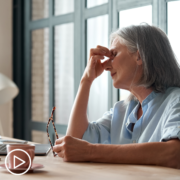
|

|

|
Transcript:
Katherine:
When a patient goes into remission, they’re often placed on a maintenance therapy. What’s the role of maintenance therapy in myeloma care?
Dr. Derman:
Yeah. So, maintenance, just to specify, is typically something that we call a long duration of usually, less intensive therapy after a more intensive schedule of therapy. So, the most common area that we talk about maintenance is after, let’s say, an autologous stem cell transplant, which came after induction therapy that I mentioned.
But for patients even who don’t go to a stem cell transplant, they can also go on maintenance therapy. So, when we think about the frontline setting, which in this case would be induction transplant maintenance, the most commonly used drug is a single agent lenalidomide (Revlimid). And that’s been shown to have survival benefits not just in keeping the disease away, but also helping patients live longer. So, maintenance therapy does seem to carry some real importance. One of the things though that we don’t know, is really how long patients need to be on maintenance therapy.
So, we can all accept I think in the myeloma field, if there’s one thing we can agree on, is that maintenance is important. But the question is, what makes up that maintenance therapy? And then how long? Those are questions we don’t really have the best answers to. And actually, one of the areas that I do quite a bit of research in is about this, how long do patients need to be on therapy?
So, we recently published some – we presented at ASH this year in 2022, some recent data, at least a preliminary data on patients who had really deep responses, and who we stopped their maintenance therapy after at least one year – but the average was about three-and-a-half years on maintenance therapy – to see if the disease would actually be at risk of coming back.
And so, what we’re finding is that even in the first year, about 85 percent of patients did not have their disease come back after stopping therapy. So, maintenance therapy is certainly important, but I think we still have to figure out how long patients need to be on that therapy.
Katherine:
Right. And I can imagine that each person, each patient is different, and some – the maintenance therapy would work really well for them for a long period of time. For others, not necessarily.
Dr. Derman:
Yeah. I mean, a lot of it comes down to the risk there of the patient’s myeloma. And what I mean by that is – so, somebody has explained to me previously, and I really like the analogy that myelomas are kind of like people. They have different personalities, and they give first impressions. And sometimes your first impression of a myeloma may end up being wrong. You thought it was going to be really hard to treat and you found out that it actually responded pretty nicely to therapy. And other times, it’s the other way around.
But for the ones that give us a bad first impression, we’re going to be treating those patients typically more aggressively. At least that’s my personal approach. And I take that all the way through from induction, to transplant, even into maintenance therapy where I mentioned already, most people will prescribe a single drug as maintenance therapy. But for those patients, I’m typically going to be prescribing more than that. Or I will continue more aggressive therapy for longer. So, that’s where you have to sort of adapt your therapy in some cases to the patient and their disease characteristics.
Katherine:
Related to maintenance therapy, we received this question before the program. How do doctors feel about maintenance breaks if you are MRD-negative? Or in a very good response?
Dr. Derman:
So, I want to be very careful about how I respond to this. Because what I’m going to say is, there’s currently no data to tell us that patients should stop. I mean, in part that’s, you should stop therapy. In part that’s what I’m hoping that we can answer with our study. There’s another large cooperative group study trying to answer this as well, about the duration piece and whether people can stop.
So, a very good partial response signifies at least a 90 percent reduction in the tumor, in the myeloma, but not 100 percent.
And there’s also a complete response, which means there’s no detectable disease by conventional methods in the bone marrow or in the blood, but that there can still be microscopic or low levels of cancer cells which we call minimal residual or measurable residual disease. Also called MRD.
So, MRD negativity is a not so nascent field now, where we are trying to quantify small amounts of cancer cells that may still be present. And the theory is that the presence of residual disease at a small measurable level is what’s ultimately responsible for myeloma relapsing.
We used to think like, “Oh, a patient is in a complete response. That’s amazing. Let’s clink our champagne glasses. Let’s celebrate.” And there’s still cause for celebration for that. That is a great achievement. But we know that that doesn’t mean we can rest on our laurels. If there is MRD-positive disease, then the disease, it can likely come back. And that’s where suppression of the disease with something like maintenance therapy with lenalidomide is probably helping a lot.
Katherine:
Yeah.
Dr. Derman:
But let’s say we have people who don’t have detectable disease, the question is, can they stop? And like I mentioned, we’re trying to answer that question. I would say right now, there’s no recommendation for that. I can’t say in good faith that you should be doing that, unless it’s as part of a clinical trial, which is what we’re hoping to answer.
What Is Known About the Risk of Myeloma Relapse?
What Is Known About the Risk of Myeloma Relapse? from Patient Empowerment Network on Vimeo.
Myeloma relapse is common, but what is known about the the probability of relapse? Expert Dr. Benjamin Dermain explains the significance of clinical trial data and the important role of blood work, including monitoring M-spike and light chain levels.
Dr. Benjamin Derman is a hematologist and oncologist specializing in multiple myeloma at the University of Chicago Medicine Comprehensive Cancer Center. Learn more about Dr. Derman.
See More from Engaging in Myeloma Treatment Decisions
Related Resources:

|

|

|
Transcript:
Katherine:
Is research being done to determine the likelihood of relapse and when that might occur?
Dr. Derman:
Yeah. I mean, we can look at clinical trial data for regimens that have been tested in the relapsed or refractory setting and say, “Okay, we know that this three drug regimen typically gives patients a year before the disease comes back.” Or “This one gives two-and-a-half years or three years.” So, that’s one piece.
But when you think about who – if you wanted to know ahead of time, “Okay, a patient with high-risk disease, they’re likely not to have as good of a response.” But nobody knows ahead of time the exact amount that they’re going to relapse.
But one of the things that we focus on, part of the reason that patients get a good amount of blood work when they have myeloma and they’re on therapy is that we have a measure in the blood, or we have several measures in the blood, where we can monitor for relapse. So, we can look at the abnormal proteins, what we call paraproteins in the blood. Either as the M-spike, is what it’s called, or light chains. We look at both of those to see if there are increases in those numbers over time.
When a patient’s responding, those numbers come down. When a patient is losing response and their disease is progressing, that’s when we start to see those numbers go up. And that’s often an indication that we need to switch treatment, even before a patient develops symptoms related to their myeloma.
What Are the Treatment Options for Relapsed/Refractory Myeloma?
What Are the Treatment Options for Relapsed/Refractory Myeloma? from Patient Empowerment Network on Vimeo.
What do relapsed/refractory myeloma patients need to consider when choosing a treatment approach? Expert Dr. Benjamin Derman explains the impact of previous therapies on options, various treatment classes available, and why combination treatments may be optimal.
Dr. Benjamin Derman is a hematologist and oncologist specializing in multiple myeloma at the University of Chicago Medicine Comprehensive Cancer Center. Learn more about Dr. Derman.
See More from Engaging in Myeloma Treatment Decisions
Related Resources:

|
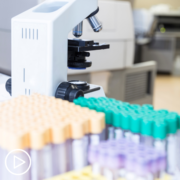
|

|
Transcript:
Katherine:
Unfortunately, relapse is common among myeloma patients. Or it may be that a treatment stops working, and so the person’s myeloma becomes refractory.
When considering a treatment for relapsed or refractory myeloma, are there different questions that patients should be asking their healthcare team?
Dr. Derman:
Yeah. I mean, that’s a great question. I think part of it is every patient’s journey with myeloma ends up being quite unique, in part because we don’t have a lot of consensus in terms of how to treat myeloma. So, I may choose one regimen, but the other doc down the street is going to recommend a slightly different one. And now, they all have efficacy. No one’s going to be recommending something that’s not good, right? But what it means is that the journey, the number of therapies, the types of therapies that a patient has received are all going to be quite different than the next.
So in part, sometimes the past therapies are going to dictate what options are available.
So, I mentioned some different classes of therapies. The proteasome inhibitors, there’s a certain number of those. The immunomodulatory iMiDs, there’s a certain number of those. The CD38 monoclonal antibodies, there are those. And then there are a few other drug classes as well.
And if we’re using three or sometimes four drugs at a time for each what we call line of therapy, meaning each time a patient changes treatment – right? Eventually, we’re going to have gone through a number of treatments that now the patient would be – their disease would be resistant to. And so, you don’t really – it’s not really going to be prudent or wise to go back to therapies that didn’t work previously.
And so, we start mixing and matching, and we come up with regimens that we think are going to hopefully throw a curveball to the myeloma to really try to get rid of it again. That’s what I mean by it’s dictated by past therapy.
Key Questions to Ask Your Myeloma Doctor About Induction Therapy
Key Questions to Ask Your Myeloma Doctor About Induction Therapy from Patient Empowerment Network on Vimeo.
What key questions should you ask your myeloma care provider when choosing induction therapy? Expert Dr. Benjamin Derman discusses factors that are important for patients to consider when making treatment decisions along with their care team.
Dr. Benjamin Derman is a hematologist and oncologist specializing in multiple myeloma at the University of Chicago Medicine Comprehensive Cancer Center. Learn more about Dr. Derman.
See More from Engaging in Myeloma Treatment Decisions
Related Resources:

|

|

|
Transcript:
Katherine:
Let’s share some tips for having that conversation. I’d like to start with induction therapy, which is the first line of treatment for patients. What questions should patients ask when choosing therapy early in their diagnosis?
Dr. Derman:
Yeah, that’s a great question. And it’s of course – it’s really the patient priorities I would say. So, one of the things that I like to discuss with patients is, number one, what are the things that they value? And that’s a hard question to ask without any qualifiers.
So, one of the things that I often ask patients to think about is the – first of all, the number of visits to the medical center. Certain therapies are weekly, certain therapies may actually decrease in frequency overtime. So, if that is something, it’s hard to travel, it’s hard to get someone to take you or to come yourself, or you just don’t want to be in the clinic as much – right? If that’s your number one priority, there are going to be certain therapies that are – or regimens that may be better suited for that patient. If somebody says, “I don’t care how many times I have to come, my goal is the deepest response possible,” you can think about things from that standpoint.
I mentioned side effects. What are the things that are scary to you personally, as a patient? Some people may look at that neuropathy, as I mentioned, and say “No way. That sounds horrible. I can’t do my job.” Other people would say, “I already have some cardiac issues. I don’t want to take that risk.” Right? So, there are different side effects that we have to take into account.
Especially when it comes to talking about transplant, there is not just the acute issues that we have to deal with in terms of side effects, but also long-term immunosuppression. Meaning the immune system is suppressed, and there’s a risk of infections, and it’s going to be higher than if you had not gotten a transplant. So, those are at least some of the things that I encourage patients to be thinking about.
I would also say, on top of that, patients may be approached about clinical trials. And I work at a university where we really value enrolling patients in clinical trials. But that they do come with some inconveniences as well, even though I think they really help to advance the field forward, and sometimes offer patients options they wouldn’t normally be able to get. But there are typically more visits associated with that, more evaluations, more blood draws, more bone marrow biopsies, so those are things that you really have to take into account.
What Factors Affect Myeloma Treatment Decisions?
What Factors Affect Myeloma Treatment Decisions? from Patient Empowerment Network on Vimeo.
Myeloma treatment decisions can vary by patient. Expert Dr. Benjamin Derman reviews factors that may guide induction therapy choices, treatment classes currently available, and strategies for managing common side effects.
Dr. Benjamin Derman is a hematologist and oncologist specializing in multiple myeloma at the University of Chicago Medicine Comprehensive Cancer Center. Learn more about Dr. Derman.
See More from Engaging in Myeloma Treatment Decisions
Related Resources:

|

|

|
Transcript:
Katherine:
There are a lot of available therapies for myeloma. And I’m wondering what factors might impact treatment decisions. You did mention comorbidities. But what other factors are there?
Dr. Derman:
Sure. And I think in part, it depends on if we’re talking about induction therapy or in the relapsed refractory setting. Let’s focus on induction therapy, right?
So, there are some drugs that we’re typically going to employ pretty much universally. For those who are inclined to use that CD38 monoclonal antibody that I mentioned, it pretty much plays well with patients of all walks of life. So, that’s one where I feel really comfortable regardless.
Lenalidomide is a drug that we don’t necessarily know from the get-go if there’s going to be a patient that’s not going to tolerate it well.
We might reduce doses up front. But for the most part, that’s another drug that we’re typically going to use. I would say the one exception is for patients who have a simultaneous diagnosis of amyloidosis. And we know that in amyloidosis, lenalidomide may not be as well-tolerated.
But actually, one of the key decisions that I’m often making in clinic myself is around that drug class that I mentioned earlier called proteasome inhibitors. And I mentioned two different drugs. There’s bortezomib and carfilzomib. And they actually come with very different side effects that I think are important to mention.
Bortezomib is one that is typically associated with a high rate of numbness and tingling, what we call neuropathy in the fingers and toes. And about 75 percent of patients have been reported in the trials to get this. And most of it is what we call lower grade. But I’m not in the patient’s body, and I don’t know what that – what even a grade 1, which would be the lowest grade, really feels like. And if I have a mechanic, somebody who types for a living, a surgeon, somebody who uses their hands or their or rely on their feet for their day-to-day, that’s a scary prospect, right?
The flip side is this drug, carfilzomib (Kyprolis), is one that does not really cause nearly as much neuropathy, but has been associated with cardiac effects. Heart issues. And so, that can scare people, right? Heart’s important I hear. So, we have to be really careful in how we pick these therapies and talk about it with patients.



